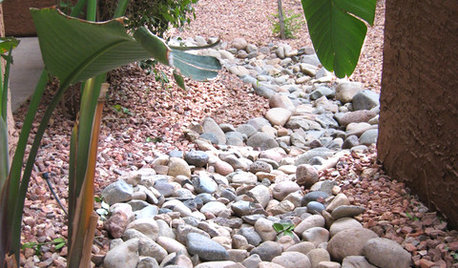I though capsaicin isn't water soluble ??
DMForcier
10 years ago
Related Stories

DECORATING GUIDESIsn’t It Good, Nordic Wood: The Appeal of Pale Floors
From silvery ash to honey blonde or chalk white, light-toned floors hold the key to the pared-back simplicity of Scandinavian style
Full Story
KITCHEN COUNTERTOPSWhen One Countertop Material Isn’t Enough
Combining counter materials in the kitchen can create a dramatic look, improve function and stretch the budget
Full Story
DECORATING GUIDESMeet a Houseplant That Doesn't Mind Neglect
Got better things to do than remember to water your houseplants on schedule? Schefflera will forgive and forget
Full Story
HOUSEKEEPINGDon't Touch Another Stain Before You Read This
Even an innocent swipe with water may cause permanent damage. Here's what to know about how rugs and fabrics react
Full Story
PATIO OF THE WEEKWater and Fire Mingle in a Canadian Front Yard
If the illuminated moat winding through this Ontario patio doesn't dazzle you, the 8-foot-wide fireplace will
Full Story
GREAT HOME PROJECTSHow to Switch to a Tankless Water Heater
New project for a new year: Swap your conventional heater for an energy-saving model — and don’t be fooled by misinformation
Full Story
GARDENING AND LANDSCAPINGDry Riverbeds Solve Water Runoff
Spring rains don't have to lead to slides. Dry riverbeds redirect water runoff and add beauty to your landscape
Full Story
GREEN BUILDINGWater Sense for Big Savings
Keep dollars in your pocket and preserve a precious resource with these easy DIY strategies
Full Story
LANDSCAPE DESIGNNew Ways to Design With Water
Go beyond 3-tiered fountains and faux waterfalls to discover water's architectural possibilities
Full StorySponsored







don555
User
Related Professionals
Camas Landscape Architects & Landscape Designers · Mitchellville Landscape Architects & Landscape Designers · Walnut Landscape Architects & Landscape Designers · Edmond Landscape Contractors · Berkeley Heights Landscape Contractors · Broadlands Landscape Contractors · Ellicott City Landscape Contractors · Hayward Landscape Contractors · Middletown Landscape Contractors · Muttontown Landscape Contractors · Pleasant Prairie Landscape Contractors · Selden Landscape Contractors · Shoreview Landscape Contractors · West Chester Landscape Contractors · Wethersfield Landscape Contractorswoohooman San Diego CA zone 10a
CanadianLori
nc_crn
peppernovice
DMForcierOriginal Author
sunnibel7 Md 7
greenman28 NorCal 7b/8a
judo_and_peppers
nc_crn
nc_crn